The year 2023 was marked by a special event in the CityLAB calendar: the first tour of our Kiezlabor through Berlin! With five locations in different neighbourhoods, 71 events and around 1,600 visitors, it was an exciting year, especially for the Kiezlabor team, with lots of experimenting, rescheduling, rethinking and very practical work: moving the container in and out!
That’s why we asked the team once again: Which formats worked particularly well? What was the best way to get into dialogue with people? And what did the team learn from the different locations?
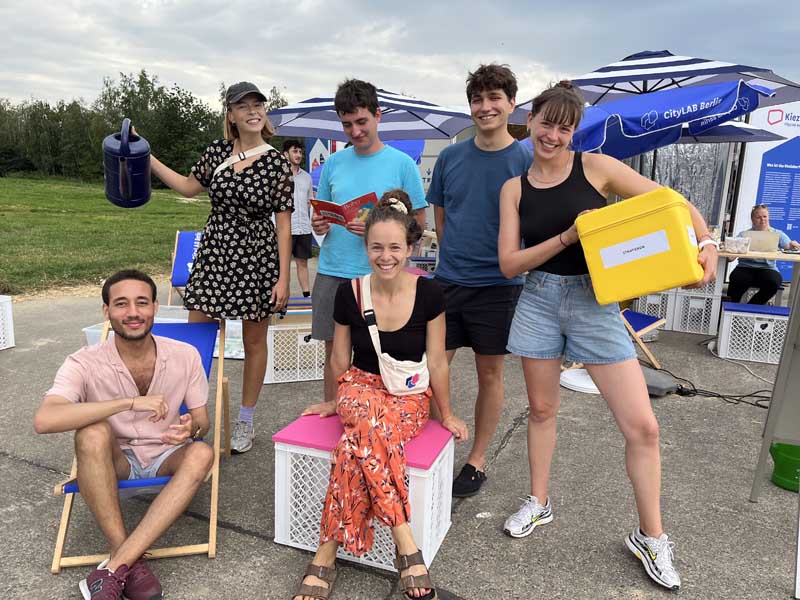
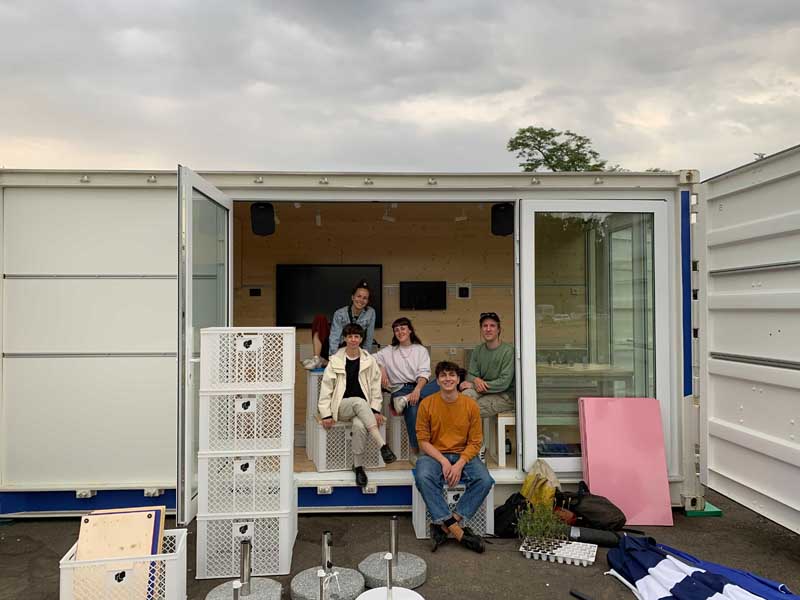
What were your highlights – whether format, an encounter or with the team – in the Kiezlabor?
Markus: I had so many highlights with the Kiezlabor itself and the team this year, I don’t even know where to start. The first big one would certainly be the official opening of the Kiezlabor in a very beautiful location, in the best weather, at the beginning of June. Being part of re:publica and at the same time being able to crown the very exhausting previous weeks with such a beautiful opening evening felt really good. Up to this point, the Kiezlabor still felt very unreal, you have to admit. We were worried that it wouldn’t be ready in time for the launch date, worried that things wouldn’t work, worried that the feedback wouldn’t be great, and none of that materialised in the end. Standing with the guests at the Flutgraben location with cool drinks and nice music – that was really great!
Ana: For me too, the opening was one of the most exciting moments with the Kiezlabor this year. To finally see in real life what we’ve been working on for months was really great!
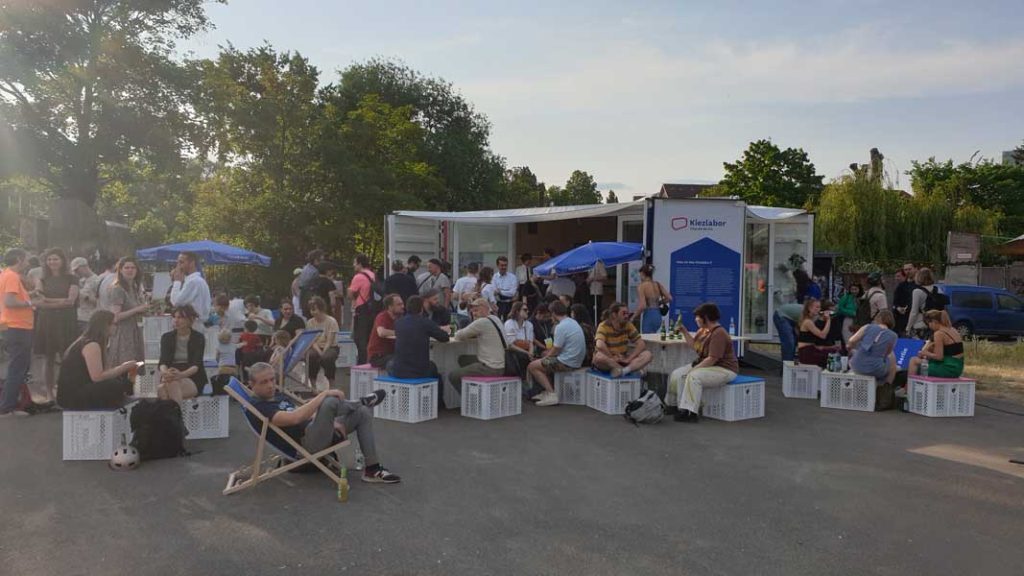
Anne: One of my highlights was working with Ayumi from Dycle for the compost workshop. The entire CityLAB team collected organic waste several weeks in advance and we were then able to work together in the workshop and produce fresh soil for the FeldFoodForest, which was located in the immediate vicinity of the Kiezlabor on Tempelhofer Feld.
Henriette: One of my highlights was the KIezvisionen workshop with a primary school in the Gräfekiez neighbourhood. The children were really enthusiastic about the generated photos and possible new scenarios for the school building and forecourt. In addition to the classic “more trees, fewer cars”, they also voted for a puppy meadow – urban visions let’s go! My second highlight was of course our team, we described ourselves as a “groovy anthill”: without rigid role allocations, we dealt with each other and any challenges in a flexible, agile and appreciative manner.
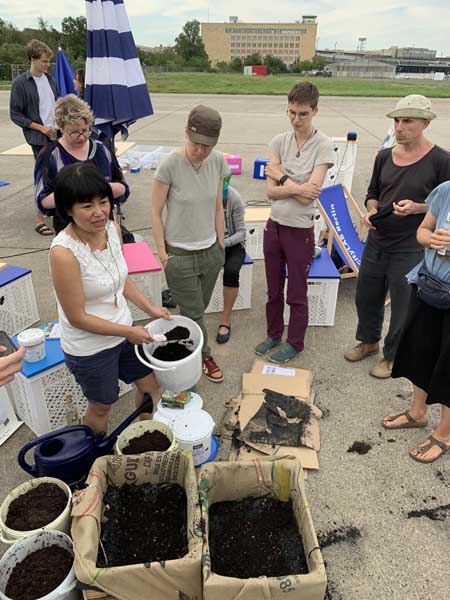

How would you describe the aim of the Kiezlabor in one sentence?
Yannick: The great thing is that everyone can bring their own goals to the Kiezlabor and our team actively networks so that we can work together on different solutions for Berlin’s liveable future. Our small Tiny House Kiezlabor enables neighbourhood residents to experience their own effectiveness and the enormous potential of creative methods and digital tools.
Ana: A place that gives people the opportunity to help shape the city in a participatory way and at the same time offers the opportunity to get to know actors who may already be working on these challenges so that they can then tackle them together.
Anne: With the Kiezlabor, we want to create a temporary space where we can discuss locally relevant topics together with the urban community and invite them to help shape the desirable city of the future.
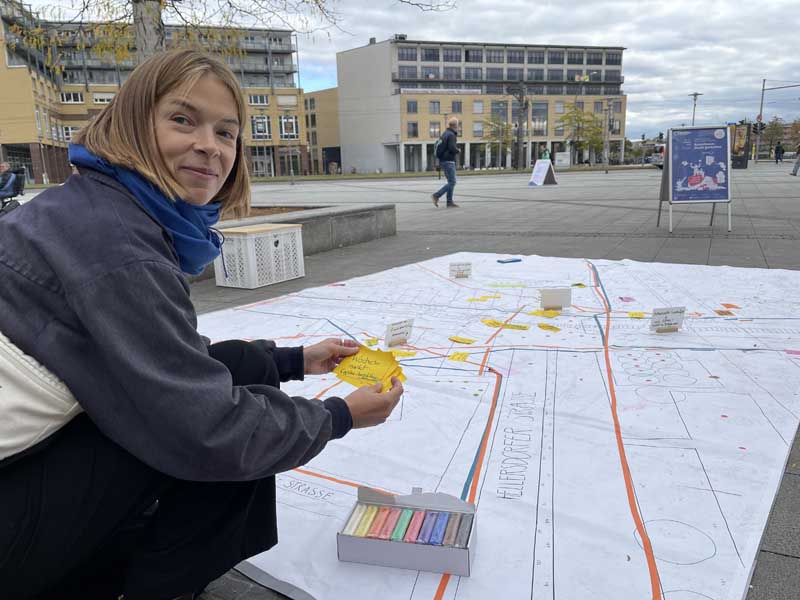
Which formats were particularly popular with visitors?
Henriette: The formats that invited people to participate in a direct and non-binding way were particularly popular. Food was often helpful here as an invitation, such as in the “Kaffee Kuchen Kiezlabor” format for a senior workshop or the food-saving workshop in Marzahn. The AI tool for urban visions, both in workshop format and for independent experimentation, also worked really well.
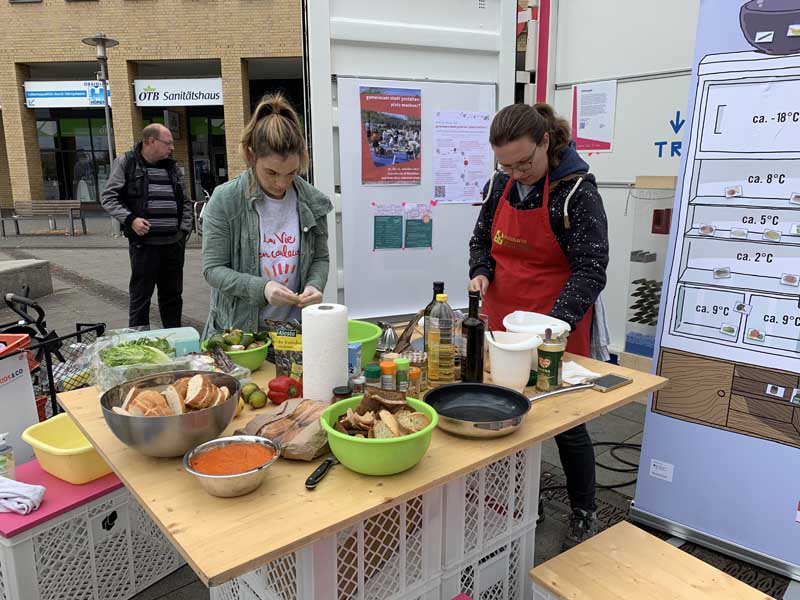
What is the best way to get into dialogue with people?
Markus: By giving them time to arrive, not immediately overwhelming them with your own topics and questions, creating a welcoming atmosphere (sounds trivial, but is essential!)”, offering everything from drinks to seating, and by avoiding the impression of wanting to sell something.
Henriette: For me, a direct approach worked best. Some people walk past curiously but don’t dare to stop or seek a conversation. Intercepting these people and approaching them helps – preferably directly in front of the programme poster.
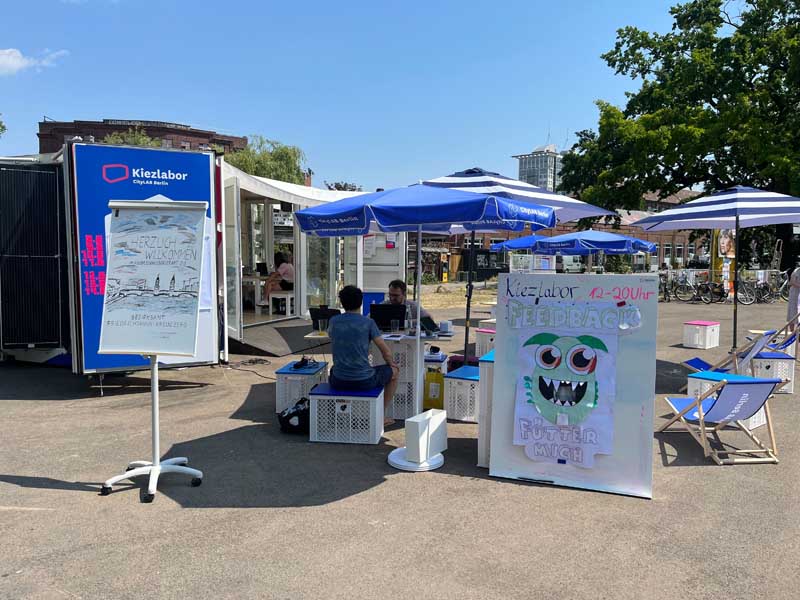

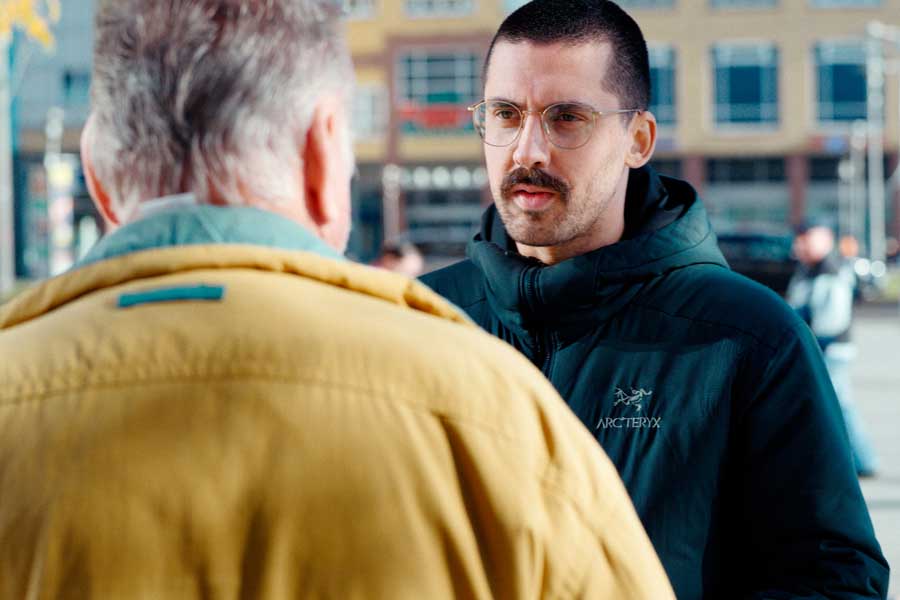
Imagine you have three wishes: What would you improve about the container?
Anne: 1. the self-assembling Kiezlabor works at the touch of a button, no carrying crates and opening and closing heavy container doors by hand. 2. if there were no height limit and the solar panels were not in the way, I would love a balcony on top of the container. 3. wheels under the container and easier manoeuvring.
How can we learn from different locations and/or compare them with each other?
Markus: In any case, we learned during the programme preparation that there is an incredible amount of local initiatives, associations and projects in and around each location that want to improve and beautify this city together! And we learnt that, despite our varying degrees of familiarity with the local area, we were always very well and beautifully received and that we didn’t know “everything” or “as much” about the city as people like to think – at least not me. We look forward to much more of this next year!
Yannick: We have learnt that the Kiezlabor could be limited to available mobile citizen office appointments to make many people very happy – but there is much more to do! Precisely because the underlying problems at the locations, such as climate challenges, digital and physical barriers for people or conflicts surrounding the use of space in public areas, weigh heavily, it was incredibly nice to see how much positive energy is generated when the creativity of neighbours and initiatives is ignited or strengthened. We have seen that real transparency in projects and processes is key so that residents are happy to contribute their knowledge or expertise in participation formats.
What were your biggest challenges as a team?
Yannick: Coordination in the Kiezlabor must run in parallel on several levels. Online and offline. Internally within the team and externally. Actively at this location and in terms of content at the next location. The team has the challenge of coordinating location issues and permits, programme partners and communities, documentation and communication in the best possible way and becomes more experienced with each location. In addition to the physical aspect of setting up and dismantling the Kiezlabor set-up every day, the biggest challenge was undoubtedly keeping children and young people from emptying their entire supplies of lemonade and cola in the shortest possible time.
Anne: In the fresh air in autumn, we felt the challenges of working in public spaces instead of in well-heated offices. As many people gradually fell ill, it became clear that we needed a well-organised team that could also be supported by the entire CityLAB if necessary.
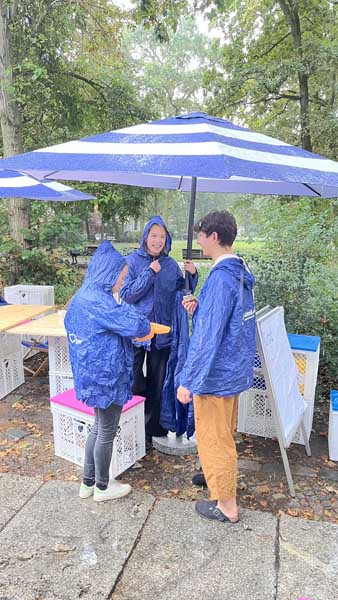
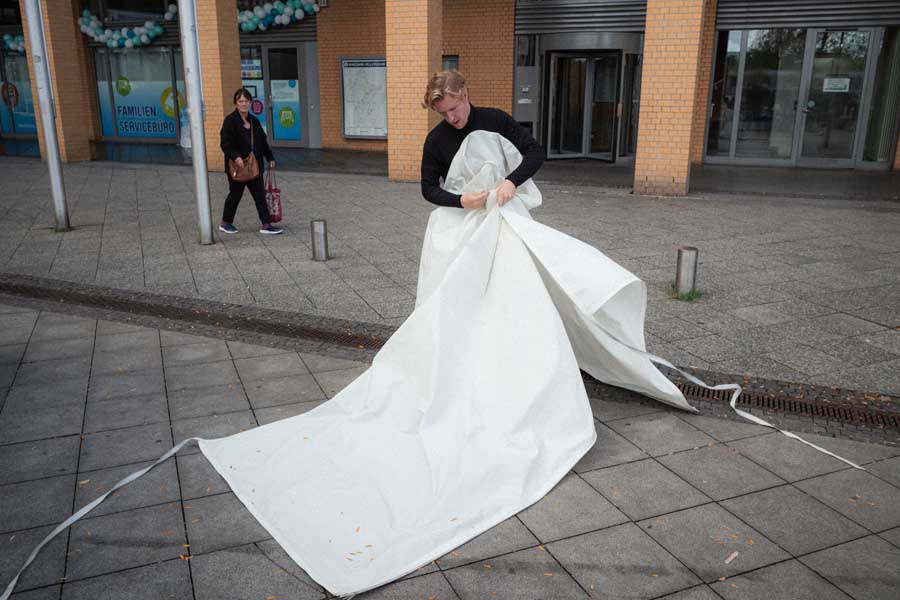
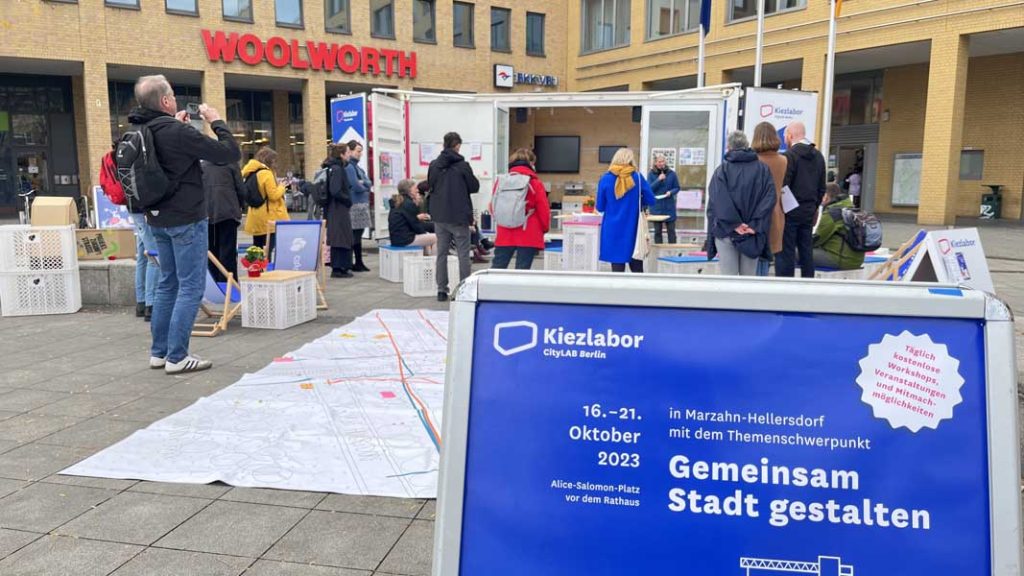
What’s next for the Kiezlabor in the coming year?
Anne: We want to tie in even more with actual change processes in the neighbourhoods and, as recently in Hellersdorf, collect concrete ideas for the future locally and introduce them into the (urban) processes. We are also trying to go out into the outer districts even more and involve the other CityLAB teams more on site. They can then use the locations to test the products directly with users, for example, and learn from local people.
